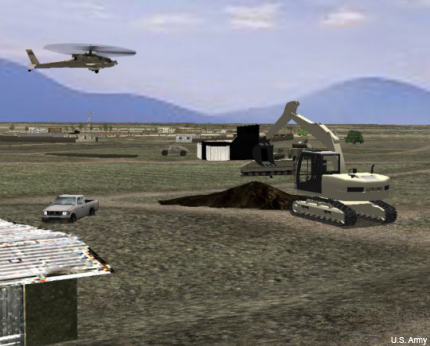Army researchers unearth next-gen construction simulations
REDCOM system lets soldiers train in groups in a variety of virtual terrains.

The military, known for making use of virtual environments for everything from flight simulations to combat scenarios, also applies simulation in other areas, such as construction, where Army researchers are developing the next generation of virtual tools.
The Army’s Research, Development and Engineering Command, or REDCOM, is pouring advances in dynamic-terrain research into virtual training tools for uniformed construction and combat engineers, the Army said. The result is an immersive system that can recreate several terrains and environments and allows soldiers to train on it in groups, operating backhoes, bulldozers, cranes and other virtual machinery.
"It gives soldiers more realism by training in an environment they would be deployed to," said Julio De La Cruz, chief engineer of synthetic natural environments for RDECOM's Simulation and Training Technology Center. "By bringing in the physics-based realism, when they dig into different types of soil, you can capture that information.
The new simulations familiarize soldiers with soil resistance in different types of terrains, moving boulders, pipes and other objects, and recognizing roadside bombs, the Army said. They’re an upgrade from the commercial systems currently used in the Construction Equipment Virtual Trainer, which don’t include customized terrain and soil models. Also, the older systems used stand-alone stations that don’t allow for a collaborative environment.
"The trainers today have generic construction sites that look like a city's downtown," said Greg Dukstein, engineering director for Dignitas Technologies, which performed research and development for STTC. "We integrated more geo-specific terrain so they could do their training in an area like Afghanistan or Korea, critical areas around the world where the U.S. Army is involved."
The new simulations cover three types of terrain: desert conditions similar to those in southwest United States or Afghanistan, a Midwest profile based on Fort Riley, Kan., and one modeled after the Army’s construction training location at Fort Leonard Wood, Mo
"We're happy to see this trainer as realistic and accurate [compared to] the actual equipment,” Dukstein said. “It's a step up by bringing dynamic terrain into this capability."
NEXT STORY: A drone by any other name is … an RPA?